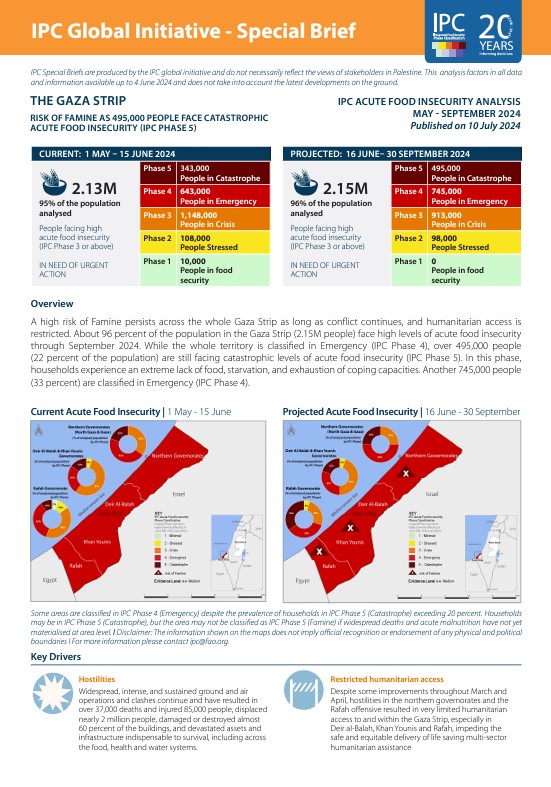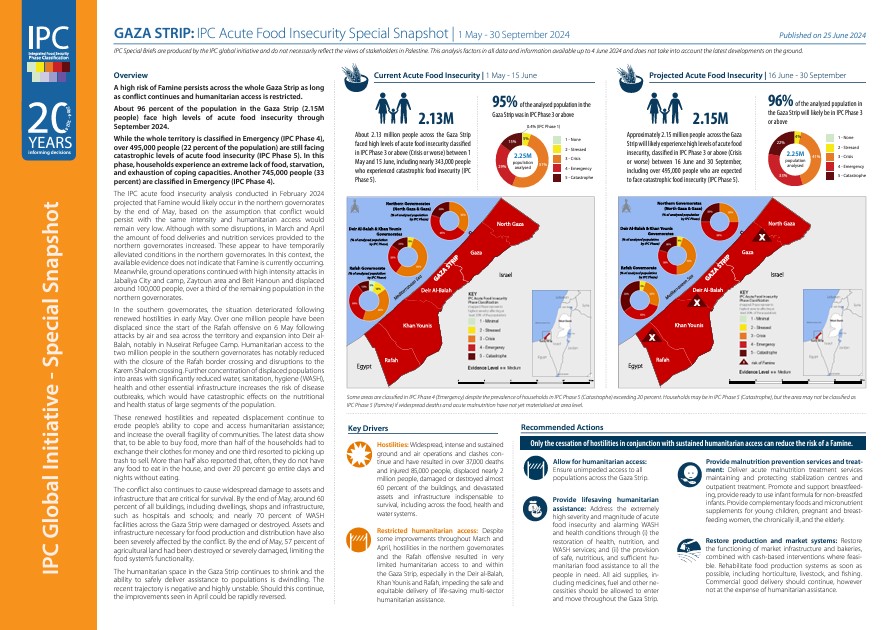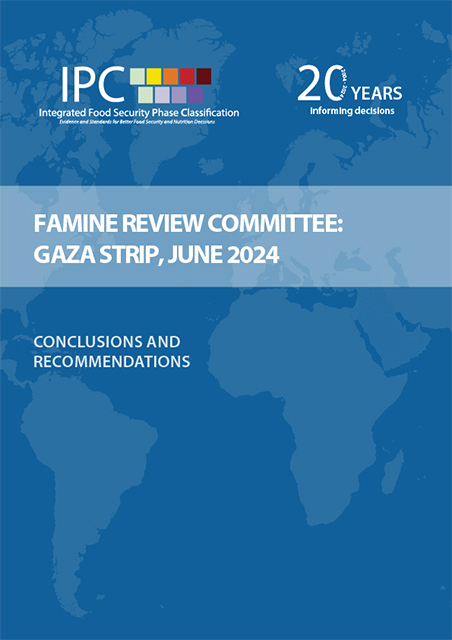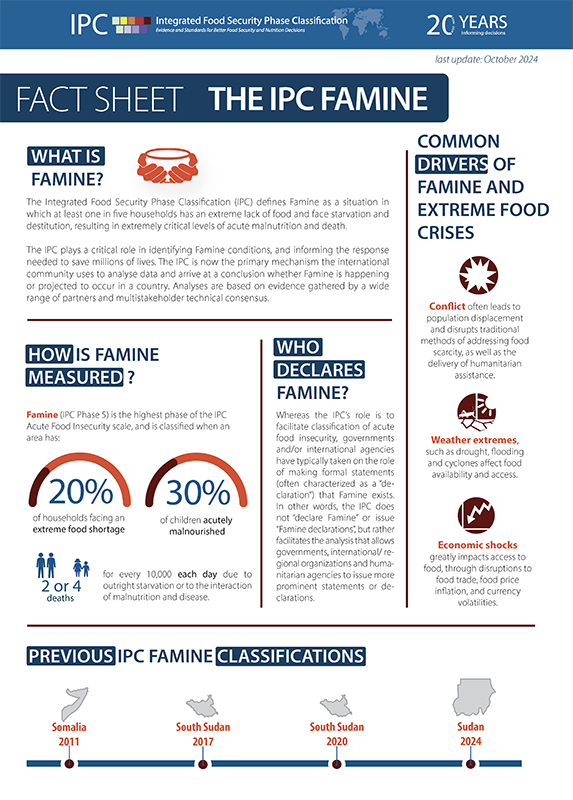
- © UNICEF
GAZA STRIP: Risk of Famine as 495,000 people face catastrophic acute food insecurity (IPC Phase 5)
A high risk of Famine persists across the whole Gaza Strip as long as conflict continues and humanitarian access is restricted.
About 96 percent of the population in the Gaza Strip (2.15M people) face high levels of acute food insecurity through September 2024.
While the whole territory is classified in Emergency (IPC Phase 4), over 495,000 people (22 percent of the population) are still facing catastrophic levels of acute food insecurity (IPC Phase 5). In this phase, households experience an extreme lack of food, starvation, and exhaustion of coping capacities.
745,000 people (33 percent) are classified in Emergency (IPC Phase 4).
Famine Review of the IPC Analysis
This is the third time the Famine Review Committee (FRC) has reviewed an analysis conducted by a multi-agency, multi-sectoral analysis team to determine the current and projected acute food security situation in the Gaza Strip. The first analysis, conducted in December 2023, concluded that there was a risk of Famine within the projection period of December 2023 to May 2024, and that the risk would increase for each day that the intense conflict and restricted humanitarian access persisted or worsened.
The second review was published on 18 March 2024 and confirmed that Famine was projected and imminent in the North Gaza and Gaza Governorates, and that the risk of Famine persisted in all other governorates of the Gaza Strip.
Following the publication of the second FRC report in March 2024, which projected that a Famine would occur in the most likely scenario, a number of important developments occurred. In contrast with the assumptions made for the projection period (March – July 2024), the amount of food and non-food commodities allowed into the northern governorates increased. Additionally, the response in the nutrition, water sanitation and hygiene (WASH) and health sectors was scaled up. In this context, the available evidence does not indicate that Famine is currently occurring.
However, the situation in Gaza remains catastrophic and there is a high and sustained risk of Famine across the whole Gaza Strip. It is important to note that the probable improvement in nutrition status noted in April and May should not allow room for complacency about the risk of Famine in the coming weeks and months. The prolonged nature of the crisis means that this risk remains at least as high as at any time during the past few months.
Download the Famine Review Committee conclusions and recommendations for the Gaza Strip
IPC Famine Factsheet
Learn more about IPC Famine Classification processes
The Integrated Food Security Phase Classication (IPC) defines Famine as an extreme deprivation of food. Starvation, death, destitution and extremely critical levels of acute malnutrition are or will likely be evident. The IPC plays a critical role in identifying Famine conditions, and informing the response needed to save millions of lives. The IPC is now the primary mechanism the international community uses to analyse data and arrive at a conclusion whether famine is happening or likely happening in a country. Analyses are based on evidence gathered by a wide range of partners and multistakeholder technical consensus.
Download IPC Famine Factsheet here
Join our mailing list




